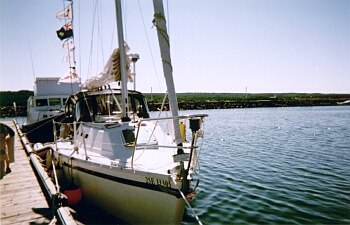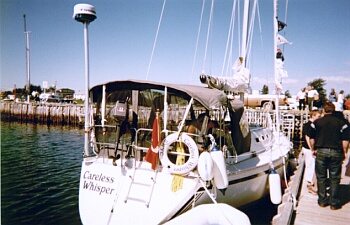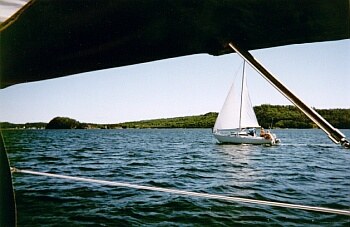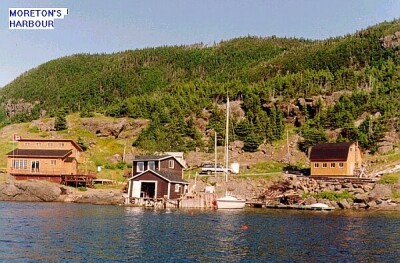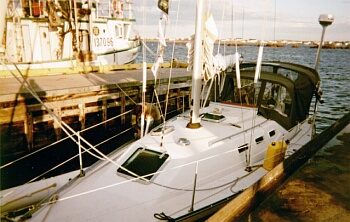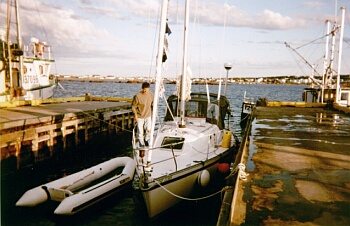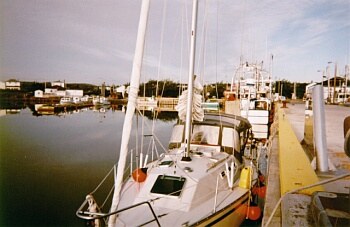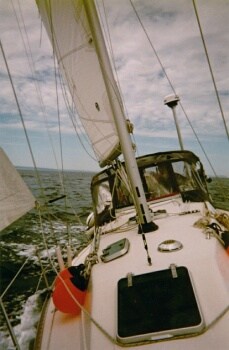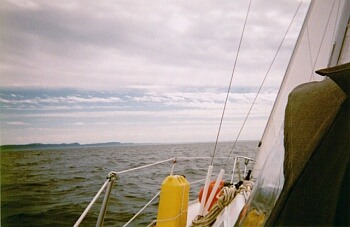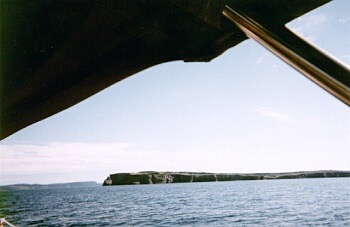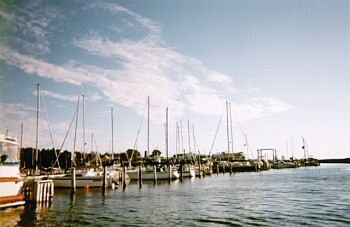| J. Peter Haliburton ~ Boating Resume ~ |
| 1997 SEASON | ||||
|---|---|---|---|---|
| Date | Make and Model | Vessel | Skipper/Owner | Duration |
| Activities Aboard | Distance | |||
| June 16 | 1985 Bayfield 36 | Windborne III | Peter Watkins | 7 hours |
| Acted as crew for delivery to Lewisporte from Triton. | 38 miles | |||
| June 21/22 | 1985 Bayfield 36 | Windborne III | Peter Watkins | 32 hours |
| Crew and GPS navigator during an overnight trip to Bonavista. | 175 miles | |||
| June 25/27 | 1985 Bayfield 36 | Windborne III | Peter Watkins | 30 hours |
| Crew and GPS navigator during the two night return trip to Lewisporte. | 175 miles | |||
| July 9 | 1985 Bayfield 36 | Windborne III | Peter Watkins | 10 hours |
| Crewed during a return day trip to Exploits Islands w/ whale watching. | 40 miles | |||
| July 22 | 1985 Bayfield 36 | Windborne III | Peter Watkins | 12 hours |
| Crewed during a return day trip to Exploits Islands. | 50 miles | |||
| July 25 | 1985 Bayfield 36 | Windborne III | Peter Watkins | 4 hours |
| Crewed during an afternoon cruise. | 20 miles | |||
| July 28 | 1985 Bayfield 36 | Windborne III | Peter Watkins | 4 hours |
| Crewed during an afternoon cruise. | 20 miles | |||
| unknown | 1985 Bayfield 36 | Windborne III | Peter Watkins | 8 hours |
| Crewed during a return day trip to Exploits Islands. | 40 miles | |||
| unknown | 1985 Bayfield 36 | Windborne III | Peter Watkins | 8 hours |
| Crewed during a return day trip to Exploits Islands to pick up some passengers. | 40 miles | |||
| unknown | 1985 Bayfield 36 | Windborne III | Peter Watkins | 10 hours |
| Lewisporte to Lukes Arm to Samsons Is, anchored overnight then back. | 50 miles | |||
| unknown | 1985 Bayfield 36 | Windborne III | Peter Watkins | 8 hours |
| Crewed during a return day trip to Exploits Islands. | 40 miles | |||
| unknown | 1985 Bayfield 36 | Windborne III | Peter Watkins | 8 hours |
| Lewisporte to Lukes Arm to Samsons Is to anchor overnight then back. | 50 miles | |||
| October 5/6 | 1985 Bayfield 36 | Windborne III | Peter Watkins | 10 hours |
| CYA Intermediate trip (Triton with overnight anchored at Exploits Is). | 38 miles | |||
| 1998 SEASON | ||||
| Date | Make and Model | Vessel | Skipper/Owner | Duration |
| Activities Aboard | Distance | |||
| June 8 | 1988 Bayfield 32C | Paws II | Peter Watkins | 8 hours |
| Co-delivered boat from Triton to Lewisporte. | 38 miles | |||
| June ?? | 1988 Bayfield 32C | Paws II | Peter Watkins | 3 hours |
| Anchored out at W Hr Sivier I for dinner. | 15 miles | |||
| July 18 | 1988 Bayfield 32C | Paws II | Peter Watkins | 9 hours |
| Crewed during a return day trip to Exploits Islands. | 40 miles | |||
| July 25/26 | Aloha 8.2 | Jo-Lain | Wayne Wall | 10 hours |
| Pilot as part of a flotilla to Lukes Arm and back w/stopover at Comfort Cv. | 50 miles | |||
| Aug 3 | Aloha 8.2 | Jo-Lain | Wayne Wall | 4 hours |
| Piloted boat from Lewisporte to Exploits as part of a long weekend trip. | 20 miles | |||
| Aug 4 | Aloha 8.2 | Jo-Lain | Wayne Wall | 6 hours |
| Piloted boat from Exploits to Moretons Hr and back. | 25 miles | |||
| Aug 5 | Aloha 8.2 | Jo-Lain | Wayne Wall | 1 hours |
| Piloted boat from Exploits to Swan Island. | 5 miles | |||
| Aug 5 | 1977 Tanzer 22 | Sunrise Princess | Ralph Miller | 1 hours |
| Piloted boat from Swan I to Exploits. | 5 miles | |||
| Aug 6 | Aloha 8.2 | Jo-Lain | Wayne Wall | 4 hours |
| Crewed on return from Exploits to Lewisporte. | 20 miles | |||
| 1999 SEASON | ||||
| Date | Make and Model | Vessel | Skipper/Owner | Duration |
| Activities Aboard | Distance | |||
| May 15 | 1984 C&C 25 | Buckshee | Blaine Duff | 2 hours |
| Spring shakedown cruise and trial of new spinnaker. | 8 miles | |||
| May 17 | 1984 C&C 25 | Buckshee | Blaine Duff | 6 hours |
| Out to Ochre Pit I. to see a huge grounded iceberg. | 30 miles | |||
| May 20 | 1984 C&C 25 | Buckshee | Blaine Duff | 2 hours |
| A fun afternoon harbour cruise in about 25kts. | 8 miles | |||
| June 23 | 1984 C&C 25 | Buckshee | Blaine Duff | 7 hours |
| Lewisporte to Botwood for Wednesday evening race. | 35 miles | |||
| May 24 | 1984 C&C 25 | Buckshee | Blaine Duff | 8 hours |
| Ran from Botwood to Exploits to Lewisporte. | 40 miles | |||
| unknown | 1984 C&C 25 | Buckshee | Blaine Duff | 7 hours |
| Lewisporte to Botwood for a race. | 35 miles | |||
| unknown | 1984 C&C 25 | Buckshee | Blaine Duff | 7 hours |
| Returned from Botwood to Lewisporte. | 35 miles | |||
| Unknown | 1977 Tanzer 22 | Sunrise Princess | Ralph Miller | 3 hours |
| Afternoon harbour cruise. | 15 miles | |||
| Aug ?? | 1984 C&C 25 | Buckshee | Blaine Duff | 2 hours |
| Singled-handed afternoon harbour sail. | 10 miles | |||
| Sept 8 | 1984 C&C 25 | Buckshee | Blaine Duff | 2 hours |
| Skippered for an afternoon harbour sail. | 10 miles | |||
| unknown | 1984 C&C 25 | Buckshee | Blaine Duff | 6 hours |
| Lewisporte to Botwood for Grassy I. race, saw whales. | 35 miles | |||
| Sept ?? | 1984 C&C 25 | Buckshee | Blaine Duff | 1 hours |
| Skippered for an afternoon harbour sail. | 5 miles | |||
| Oct 3 | 1984 C&C 25 | Buckshee | Blaine Duff | 2 hours |
| Skippered for an afternoon harbour sail. | 10 miles | |||
| 2000 SEASON | ||||
| Date | Make and Model | Vessel | Skipper/Owner | Duration |
| Activities Aboard | Distance | |||
| Aug 31 to Sept 4 |
1974 C&C 30 | Windthrush | Peter Briffa | 60 hours |
| Crew and co-navigator during a trip to St. John's, including one overnight (38 hrs). | 250 miles | |||
| Nov 13 to Nov 24 |
1984 Bayfield 32 | Salt Heart | Bill McMaster | 82 hours |
| Crew and co-navigator Charlottetown, PE to Shelburne, NS. 8-12 watch. | 415 miles | |||
| 2001 SEASON | ||||
| Date | Make and Model | Vessel | Skipper/Owner | Duration |
| Activities Aboard | Distance | |||
| June 22 | Abbott 22 | Mark 10:31 | Peter Watkins | 2 hours |
| Crew for an afternoon harbour sail. | 8 miles | |||
| Jul 29 to Aug 1 |
1984 CS 30 | Careless Whisper | Julie and Edward Rideout | 50 hours |
| Crew and co-navigator Lewisporte, NF to RNYC | 225 miles | |||
| * Sailing experience only, power boating was not logged. Where exact dates were not known, the order should be correct. Four times sailing a CL-14 on both salt and fresh water were not logged. Numerous trips helping with sailing lessons were not logged. Some distances and times may be rounded off. |
